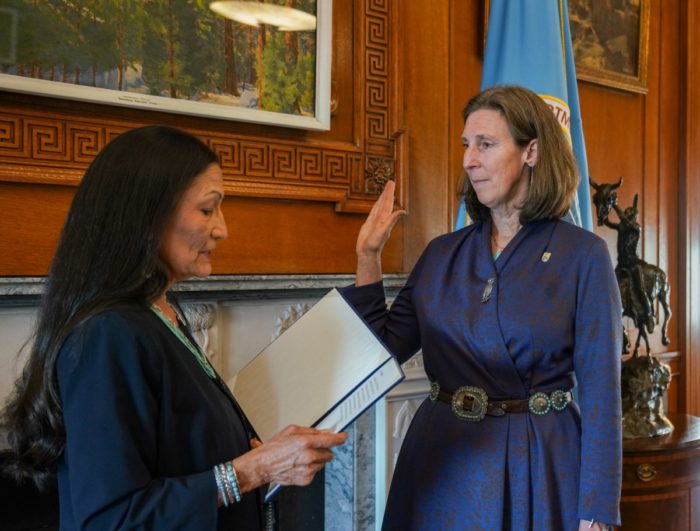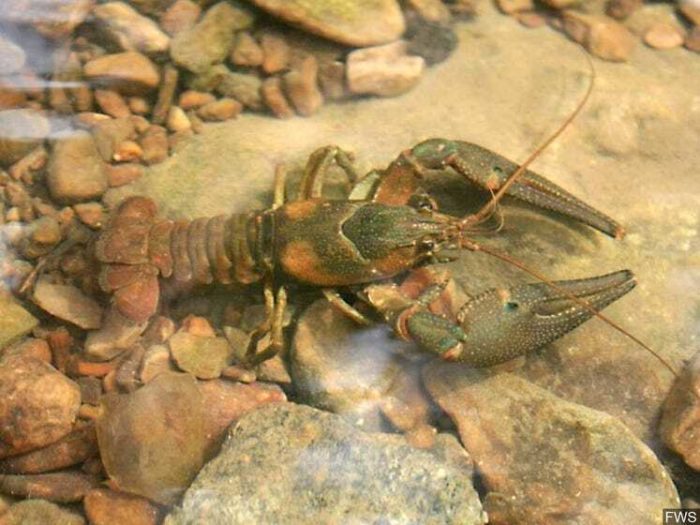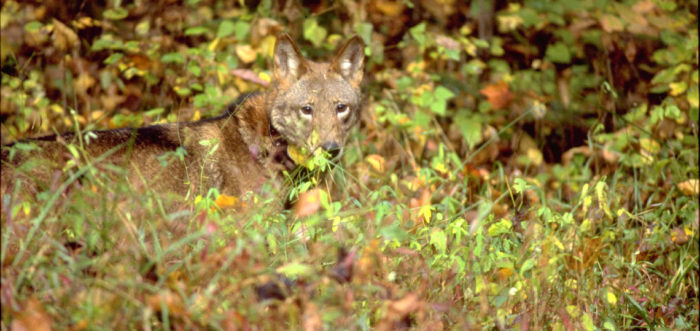These should be the leading priorities for new US Fish and Wildlife Director
On March 8, Martha Williams was sworn in by Department of the Interior Secretary Deb Haaland as the director of the U.S. Fish and Wildlife Service. Now that she has assumed her new role, the Southern Environmental Law Center looks forward to working with her on important steps to improve wildlife conservation throughout the country.
FWS faces unprecedented and complex challenges impacting the Southeast’s rich biodiversity—along with great opportunities to protect it. In a letter to Director Williams, we highlighted initial priorities:

Consider science and climate change in restoring bedrock wildlife protections
FWS must move forward with revisions to restore and further strengthen the ESA implementing regulations as quickly as possible after the previous administration gutted those longstanding rules. Many iconic Southeastern ecosystems are facing the urgent threat of climate change, including coastal estuaries, bottomland hardwood forests, longleaf pine forests, Carolina bays, and pocosin peat bogs. These revisions must restore needed longstanding ESA protections and should require FWS to give due consideration to the current and future effects of climate change on species and their habitats in the agency’s decisions.
Meanwhile, we are heartened by FWS’s revocation of the Trump administration’s regulations limiting the scope of the Migratory Bird Treaty Act and look forward to working with the agency as it develops a permitting framework to advance conservation for migratory birds.
FWS must follow science and consider climate change as the agency works to strengthen implementation of key wildlife laws.
Stop unjustified removal of Southeastern species protections
In 2017, the FWS Southeastern office began setting an annual goal for removing protections for imperiled species—even those in need of conservation. This objective established a quota of down listing, delisting, or denying listed status for 30 species per year. FWS should reject this quota system, which seems to have influenced several adverse listing decisions for Southeastern species in recent years, like the unjustified proposed delisting of the dwarf-flowered heartleaf and the refusal to list species like the Berry Cave salamander.
Pause the proposed downlisting for the red-cockaded woodpecker
In addition to revisiting decisions influenced by the quota, FWS should reconsider its proposal to reclassify the endangered red-cockaded woodpecker as threatened. FWS formally proposed in October 2020 to down list the iconic red-cockaded woodpecker to threatened, removing many of the protections the species has long depended upon. Although the agency has now recognized the initial proposed rule’s shortcomings, the down listing would ignore the anticipated impacts of climate change on the bird’s habitat and fail to account for the species’ dire status across the western half of its range.

Rescind proposed delisting of the Nashville crayfish
FWS should also withdraw its unsupported November 2019 proposal to delist the endangered Nashville crayfish. None of the risk factors that led to the listing of the crayfish in the 1980s, however, have improved—they have gotten much worse as Nashville has grown. The crayfish is endemic to Mill Creek, a tributary to the Cumberland River that runs through rapidly developing parts of Nashville and its suburbs. In its delisting proposal, FWS relied on decades-old population data and ignored the best available science on the watershed and the effects of climate change.
Recommit to red wolf recovery
For decades, the reintroduction of red wolves into Eastern North Carolina in 1987 was heralded as a conservation success story. In the mid-2000s, the red wolf population peaked around 130 animals and steadily maintained an estimated population of 100. But in 2014, FWS began to disregard the agency’s own conservation measures and duties. The population now numbers as few as 10 wild red wolves, and no red wolf litter has been born in the wild since 2018.

Against this backdrop, we are heartened by FWS’s stated recommitment to the red wolf in recent months. Last November, FWS formally withdrew a 2018 proposed rule that was antithetical to red wolf recovery. And in February of this year, FWS held a public meeting about its upcoming plans for releasing captive red wolves into the wild, promising to improve outreach with local residents and work to grow the wild population. FWS should rehabilitate this critically important wild population and recommit to its recovery on the landscape.
Maintain and enhance protected spaces for wildlife
As one of the fastest growing areas of the country, Southeastern ecosystems face many threats from human activities. Development of natural areas fragments and destroys habitats, threatening species across the region. At the same time, the climate crisis is exacerbating these threats, and preexisting habitat destruction will impede the ability of species to otherwise adapt to higher temperatures, increased rainfall, and sea level rise. Against this backdrop, set-aside spaces for purposes of conserving wildlife and habitat, like national wildlife refuges, become even more vital.
FWS should enhance protections for habitat and species on the National Wildlife Refuge System, as well as other federal lands like National Forests, and develop concrete ways to increase protected habitats for wildlife in the Southeast. This includes guarding against harmful proposals at places like Back Bay National Wildlife Refuge, Cape Romain National Wildlife Refuge, and Okefenokee National Wildlife Refuge.
